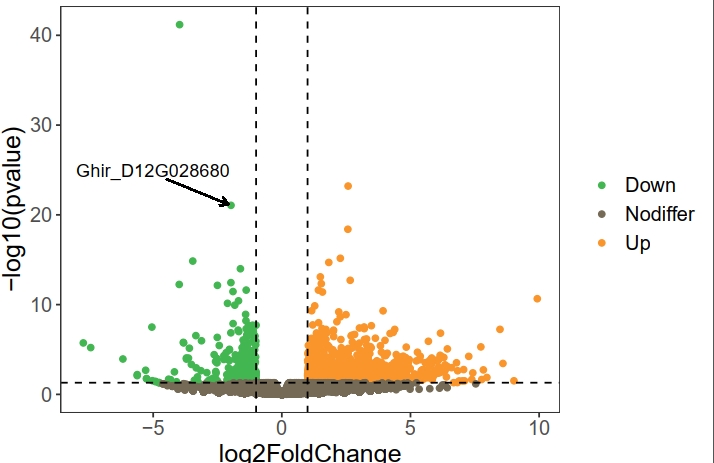02基因差异表达分析
R包安装
使用R3.6.0,进行
if (!requireNamespace("BiocManager", quietly = TRUE))
install.packages("BiocManager")
BiocManager::install("ballgown")
##也可以直接使用library加载
library(ballgown)报错
BiocManager在安装过程中没有权限
# Installation path not writeable
installed.packages()[, c("Package", "LibPath")]
#查看这些包的安装路径,直接改变权限1.加载表达文件
当stringtie生成的*.ctab文件都在同一个目录下的时候,直接使用样本所在的父目录作为参数。samplePattern样本的前缀,这个例子中包含有20个样本的数据
# make the ballgown object:
#根据目录来提取表达
bg = ballgown(dataDir=data_directory, samplePattern='sample', meas='all')
bg
#直接指定样本文件夹所在路径
ballgown(samples=c(文件目录),meas='all')
## ballgown instance with 100 transcripts and 20 samples2.使用插槽访问里面的各种数据
差异表达分析
Ballgown provides a wide selection of simple, fast statistical methods for testing whether transcripts are differentially expressed between experimental conditions or across a continuous covariate (such as time).
总共15个分类,每类里有两个重复
也可以得到matrix用于到其他模型中,例如DEseq2等。
分析两个重复间的重复性和差异表达基因
使用DESeq2进行差异表达分析
htseq统计比对到gene的read数目
进行差异表达分析
绘制火山图

比较分类
1、3 和J在不同发育阶段比较
6、7和J在不同发育阶段比较
1、2和6、7在不同发育阶段比较
1、3在三个时期进行轨迹的比较
6、7在三个时期进行轨迹的比较
J在三个时间进行轨迹的比较
参考
转录组差异表达分析 https://github.com/alyssafrazee/ballgown
Last updated
Was this helpful?